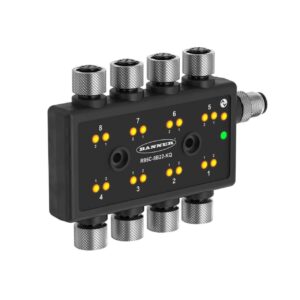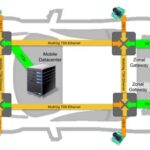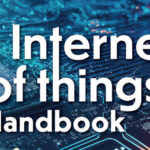Now in its sixth year, Design World’s LEAP Awards continue to showcase the best engineering innovations across several design categories. It’s a large undertaking that wouldn’t be possible without the commitment and support of the engineering community.\
Each year, the editorial team assembles OEM design engineers and academics to create an independent judging panel. Below is their selection for this year’s LEAP Awards winners in the Embedded Computing category.
Congratulations to the winners of LEAP Awards for Embedded Computing profiled here.
Gold
Ambarella, Inc.
4D Imaging Radar Architecture for Autonomous Mobility Systems
 Ambarella, Inc. centralized 4D imaging radar architecture allows both central processing of raw radar data and deep, low-level fusion with other sensor inputs — including cameras, LiDAR, and ultrasonics. This provides greater environmental perception and safer path planning in AI-based ADAS and L2+ to L5 autonomous driving systems, as well as autonomous robotics. It features Ambarella’s Oculii radar technology, including the only AI software algorithms that dynamically adapt radar waveforms to the surrounding environment — providing high angular resolution of 0.5 degrees, an ultra-dense point cloud up to 10s of thousands of points per frame, and a long detection range up to 500+ meters.
Ambarella, Inc. centralized 4D imaging radar architecture allows both central processing of raw radar data and deep, low-level fusion with other sensor inputs — including cameras, LiDAR, and ultrasonics. This provides greater environmental perception and safer path planning in AI-based ADAS and L2+ to L5 autonomous driving systems, as well as autonomous robotics. It features Ambarella’s Oculii radar technology, including the only AI software algorithms that dynamically adapt radar waveforms to the surrounding environment — providing high angular resolution of 0.5 degrees, an ultra-dense point cloud up to 10s of thousands of points per frame, and a long detection range up to 500+ meters.
To create this cost-effective new architecture, Ambarella optimized the Oculii algorithms for its CV3 AI domain controller SoC family and added specific radar signal processing acceleration. The CV3’s AI performance per watt offers the high compute and memory capacity needed to achieve high radar density, range, and sensitivity. Additionally, a single CV3 can efficiently provide high-performance, real-time processing for perception, low-level sensor fusion, and path planning centrally and simultaneously within autonomous vehicles and robots.
By applying AI software to dynamically adapt the radar waveforms generated with existing monolithic microwave integrated circuit (MMIC) devices and using AI sparsification to create virtual antennas, Oculii technology reduces the antenna array for each processor-less MMIC radar head in this new architecture to 6 transmit x 8 receive. Overall, the number of MMICs is drastically reduced while achieving an extremely high 0.5 degrees of joint azimuth and elevation angular resolution. Additionally, Ambarella’s centralized architecture consumes significantly less power at the maximum duty cycle. It reduces the bandwidth for data transport by 6x while eliminating the need for pre-filtered edge processing and its resulting loss in sensor information.
Silver
Texas Instruments
AM6xA vision processors
 TI’s vision processors bring intelligence from the cloud to the real world by eliminating cost and design complexity barriers when implementing vision processing and deep learning capabilities in low-power edge AI applications.
TI’s vision processors bring intelligence from the cloud to the real world by eliminating cost and design complexity barriers when implementing vision processing and deep learning capabilities in low-power edge AI applications.
These processors feature a system-on-a-chip (SoC) architecture that includes extensive integration. Integrated components include Arm Cortex-A53 or Cortex-A72 central processing units, a third-generation TI image signal processor, internal memory, interfaces, and hardware accelerators that deliver from 1 to 32 Tera operations per second (TOPS) of AI processing for deep learning algorithms.
Vision processors in this family include the:
- AM62A3, AM62A3-Q1, AM62A7, and AM62A7-Q1, which support one to two cameras at less than 2 W in applications such as video doorbells and smart retail systems. This family includes the AM62A3, the industry’s lowest-cost 1-TOPS vision processor (US$12 in 1,000-unit quantities).
- AM68A, which enables one to eight cameras in applications like machine vision, with up to 8 TOPS of AI processing for advanced video analytics.
- AM69A, which achieves 32 TOPS of AI processing for one to 12 cameras in high-performance applications such as edge AI boxes, autonomous mobile robots, and traffic monitoring systems.
This platform of vision processors, software, and tools helps designers easily develop and scale edge AI designs across multiple systems while accelerating time to market. This includes the free open-source tool Edge AI Studio. This feature-rich, web-based tool allows users to develop and test AI models quickly and easily using user-created models and TI’s optimized models, which can also be retrained with custom data.
Bronze
Silicon Labs
BG27/MG27

The BG27/MG27 is ideal for ideal for low-power battery-powered IoT and supports Bluetooth 5.3, Bluetooth mesh, and proprietary networks. The BG27 features an integrated DCDC boost that allows operation down to 0.8 volts, enabling support for single-cell alkaline and 1.5-volt button cell batteries that are typically used in medical applications for battery-operated patches and continuous glucose monitoring (CGM) devices. More applications include portable medical devices, home end devices, fleet/asset monitoring, industrial automation, access control, power tools, Bluetooth mesh, sports, fitness, and wellness devices.
The wakeup pin on the BG27 allows products in a warehouse or transit to remain off for months, consuming less than 20 nA, ensuring the battery remains fully charged for use. The integrated coulomb counter enables accurate battery level monitoring to avoid unexpected battery depletion for critical applications.
Key features include: 32-bit ARM Cortex-M33 core with 76.8 MHz maximum operating frequency; 768 kB of flash and 64 kB of RAM; Energy-efficient radio core with low active and sleep currents; integrated PA with up to 8 dBm (2.4 GHz) TX power; Secure Boot with Root of Trust and Secure Loader (RTSL); pin compatibility/ feature superset with EFR32xG22 in QFN; DC-DC supporting buck (1.8-3.8 V) or boost (0.8 – 1.7 V) operation.
The devices are available in WLCSP and QFN packaging.
Honorable Mention
GreenWaves Technologies’ GAP9 Processor
Microchip RISC-V-based SoC FGPA
For the complete list of 2023 LEAP Award winners across all categories, visit https://www.designworldonline.com/2023-leap-awards-winners-are-announced/.




Leave a Reply